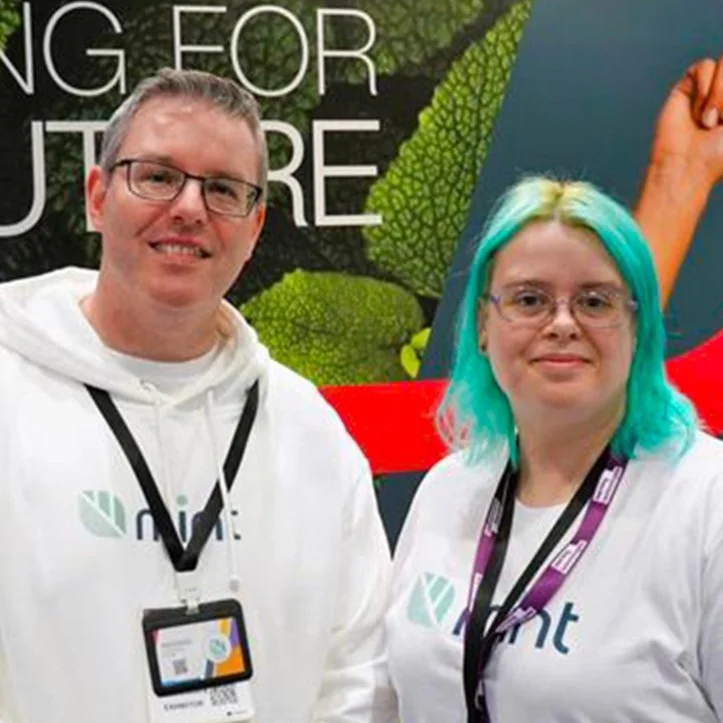Accessibility: It’s not just about screen readers…
In the ever-evolving digital world we live in, accessibility is no longer a ‘nice-to-have’, it's an absolute must.
It's essential that everyone, regardless of their abilities, has fair and equal access to information and resources.
At the 2023 Learning Technologies Conference and Exhibition our expert speakers, Gemma Nunn and Michael Ditchburn, took the stage and highlighted an often-overlooked aspect of accessibility: It’s not just about screen readers...
Gemma and Michael challenged the audience’s assumptions and urged them to rethink how they approach accessibility. They emphasised the importance of understanding and catering to the unique needs of individuals with varying abilities, challenging all of us to rethink our design strategies.
In today's blog post, we'll break down the seminar, highlighting the key points and valuable insights that Gemma and Michael shared.
1. Rethinking accessibility paradigms
In the session, Gemma and Michael invited the audience to challenge the traditional understanding of accessibility as merely a matter of screen readers. They put the spotlight on recognising that accessibility goes beyond catering to visual impairments and should be inclusive to other conditions, such as cognitive, motor or hearing challenges. They also highlighted that not all impairments are permanent – some can be situational, such as a broken arm, or a poor internet connection. By adopting a broader perspective from the inception of a learning intervention, organisations and designers can foster a more inclusive environment for all learners.
2. Designing with inclusivity in mind
User experience (UX) design and accessibility go hand in hand: designing for accessibility should not be an afterthought, but an integral part of the UX design process. They stressed the significance of incorporating inclusive design principles from the beginning, such as clear navigation, appropriate colour contrast, and a logical information hierarchy - this way we can create interfaces that cater to a wider audience.
3. Assistive technologies beyond screen readers
While screen readers are undoubtedly crucial for individuals with visual or cognitive impairments, they emphasised that accessibility encompasses much more. They discussed alternative assistive technologies, such as braille readers, screen magnification, and voice recognition.
4. User-centric design
The seminar highlighted the significance of user-centric design in achieving true accessibility. Gemma and Michael discussed the importance of understanding our learners before we even begin to build a product. By actively engaging diverse users throughout the development cycle, digital products and services can be tailored to meet their requirements more effectively.
5. Training and education
To facilitate our journey toward accessibility, they discussed the significance of educating ourselves and our colleagues about best practices. Various resources and tools that can assist us in creating more inclusive digital experiences were shared, including pointers to the WCAG guidelines, the A11y project, WebAIM and speaking to accessibility experts (like us!).
6. Taking action
Here are three simple steps that can help you improve your accessibility today:
Headings and hierarchies:
Ensure your content is structured with meaningful headings. Use descriptive headings that convey the topic and break down the content into logical sections. Avoid using multiple top-level headings (<h1>), as they should represent the overarching topic of the entire page.
Alt tags for images:
Describe images to individuals who can't easily see them. Use alt tags to provide descriptions for informative images, such as graphs or illustrations, that convey essential information in the course. For decorative images, where they only serve ornamental purposes, use empty alternative text (null alt tag).
Plain, readable Language:
Use plain language that is easy to read and understand. Consider the needs of individuals with cognitive difficulties, non-native English speakers, or those with dyslexia. Avoid using excessive jargon or complex terminology, and break up text into shorter, more digestible paragraphs.
7. Continuing the accessibility journey
Remember, accessibility is an ongoing learning journey. Educate yourself on the fundamentals of accessibility, explore available resources, and stay updated on best practices.
At Mint, we're continuously learning and implementing new techniques to ensure our eLearning is as inclusive as possible. By prioritising accessibility from the start, we can create learning experiences that benefit everyone.

